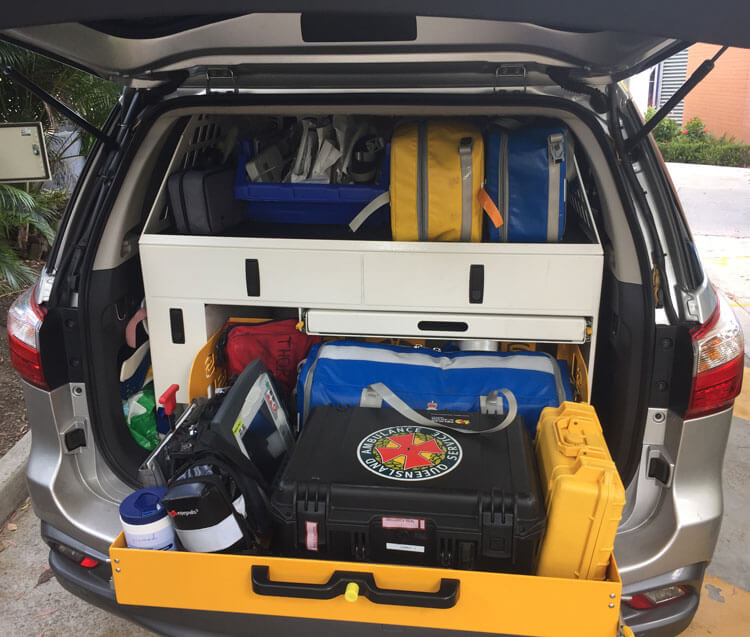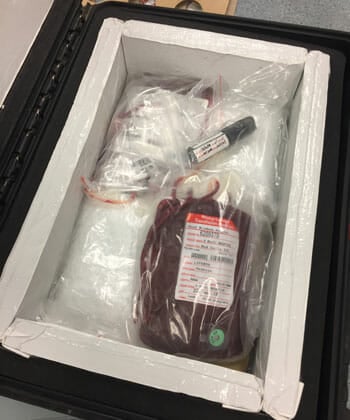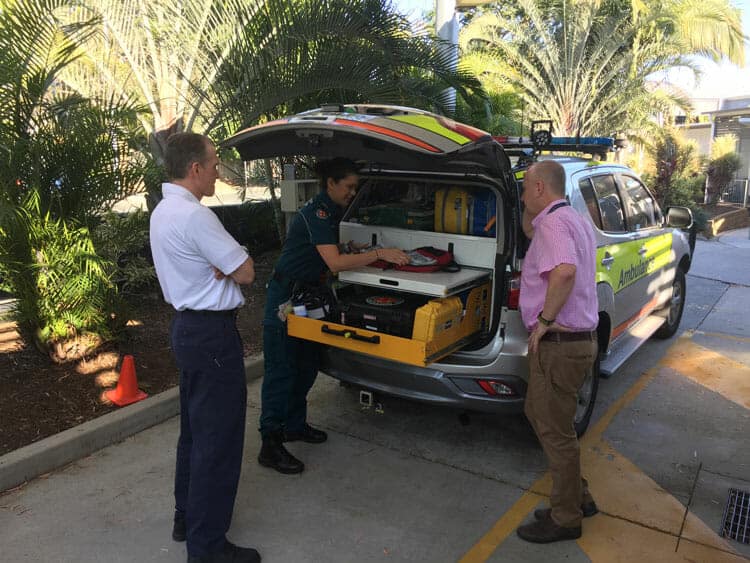
Prehospital Blood in Queensland, Australia
- Posted by Mike Shertz MD/18D
- Categories (M) Massive Hemorrhage
🕖 Reading Time, 2 minutes
While recently in Brisbane, Australia I had the opportunity to ride with a High Acuity Response Unit (HARU) paramedic for the Queensland Ambulance Service. HARU paramedics are a select group of critical care paramedics with additional training and equipment, including the ability to use prehospital ultrasound and administer blood products. They are called to particularly sick or injured prehospital patients by the treating paramedic if their additional skill set is felt to be needed.
Like many cutting-edge EMS systems, they carry blood products for prehospital use. Currently, each HARU paramedic carries two units of O negative Packed RBCs in climate controlled Pelican cases. They will also begin carrying fibrinogen concentrate shortly.

Although the recent NEJM article Prehospital Plasma during Air Medical Transport in Trauma Patients at Risk for Hemorrhagic Shock authored by Dr. Sperry showed a 9.8% reduction in thirty-day mortality if prehospital trauma patients received thawed plasma, additional civilian prehospital literature supporting the administration of blood products is lacking. 2
In 2016 the journal Shock published a systematic review of the clinical literature that included 27 studies related to the prehospital administration of blood products. Unfortunately, they concluded that the current evidence to either support or contradict prehospital blood product administration is very lacking. 3
If you’d like more detail on how a US-based EMS system started their prehospital blood product program this JEMS article is a very nice summary from Medic One in Harris County, Texas.
The prehospital administration of blood products seems to make intuitive sense; however, the evidence supporting it in Civilian EMS systems is currently minimal. Dr. Sperry’s research is a good start and more data is necessary.
1 Queensland Ambulance protocol for blood administration
2 Sperry JL, Guyette FX, Brown JB, et al. Prehospital Plasma During Air Medical Transport at Risk for Hemorrhagic Shock. New Engl J Med. 2018 Jul 26;379(4):315-326
3 Smith IM, James RH, Dretzke J, et al. Prehospital blood product resuscitation for trauma: A systematic review. Shock. 2016;46(1):3–16.
Dr. Mike Shertz is the Owner and Lead Instructor at Crisis Medicine. Dr. Shertz is a dual-boarded Emergency Medicine and EMS physician, having spent over 30 years gaining the experience and insight to create and provide his comprehensive, science-informed, training to better prepare everyday citizens, law enforcement, EMS, and the military to manage casualties and wounded in high-risk environments. Drawing on his prior experience as an Army Special Forces medic (18D), two decades as an armed, embedded tactical medic on a regional SWAT team, and as a Fire Service and EMS medical director.
Using a combination of current and historical events, Dr. Shertz’s lectures include relevant, illustrative photos, as well as hands-on demonstrations to demystify the how, why, when to use each emergency medical procedure you need to become a Force Multiplier for Good.




